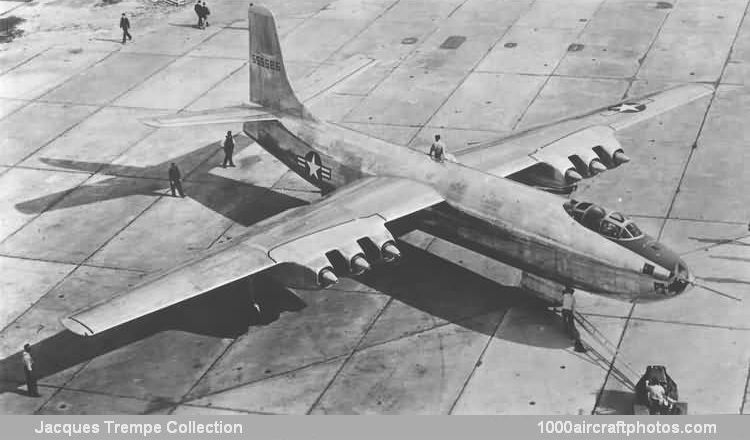10/31/2011. Remarks by Johan Visschedijk: "In 1944, the USAAF issued a specification for a long-range, jet-powered bomber envisaged as the next-generation aircraft to follow the Boeing B-29. Four companies, Boeing, Convair, Martin and North American Aviation, submitted proposals, the first three receiving contracts for prototypes in fiscal year 1945, under the USAAF designations XB-46, XB-47 and XB-48 respectively.
The Glenn L. Martin Company bomber was a huge, shoulder-wing, monoplane powered by six 3,750 lb (1,701 kg) st Allison J35-A-5 turbojets mounted three per nacelle. The far from unattractive straight-wing design was exceedingly conventional in appearance, not unlike some of the early jet bomber designs of the German wartime Arado firm.
The only unusual feature of the new aircraft was known, in those days, as bicycle landing gear. The tandem gear with small outrigger wheels two-thirds out on the wing permitted a relatively thin wing while also allowing fuselage space for a bomb bay capable of handling 20,000 lb (9,072 kg) of bombs. This landing gear was tested first on a Marauder, designated XB-26H and known colloquially as the 'Middle River Stump Jumper'.
Two XB-48s were ordered, the first (s/n 45-59585) flying on June 14, 1947 with Martin's inimitable O.E. (Pat) Tibbs at the controls. The XB-48 carried a crew of three (pilot, navigator, bombardier) and had a maximum gross weight of 102,600 lb (46,539 kg). Wing span was 108 ft 4 in (33.02 m) and length 85 ft 9 in (26.14 m). Maximum speed was estimated 500 mph (805 kmh) - not exactly breathtaking.
After an apparently brief flight test program, both XB-48 airframes were scrapped, the Convair XB-46 of the same period met a similar fate. But the end of the XB-48 program was also due to the feeling that the XB-48 was not enough of a quantum jump. The tandem landing gear of the XB-48, also a feature of the incomparably successful B-47, was perhaps the only legacy that the Martin machine bequeathed to future generations.
The third jet-propelled bomber being tested during the same period, the XB-47, also owed something to wartime German engineering. It possessed an absolutely essential feature the others lacked - swept wings. It was new and strange-looking in contrast to the very conventional XB-48, and eventually nearly 2,000 examples of the Boeing B-47 Stratojet would be produced."
